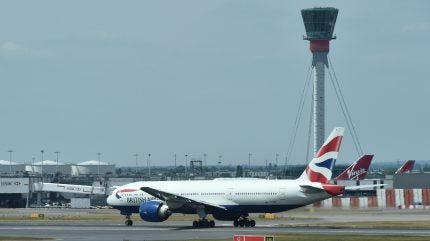
NATS, the UK’s main air traffic control provider, has upgraded its demand capacity balancer (DCB) technology at London Heathrow Airport to allow it to optimise its operating plan and reduce aircraft emissions.
The digital twin software has been used by the airport since 2015 to predict and model operational performance using data on weather events, airspace restrictions, and on-time performances, but has now been updated to include environmental impact data.
Guy Adams, managing director of NATS Services, said: “DCB is a proven success at Heathrow, helping save several millions of pounds a year by reducing delays, so it makes perfect sense to harness that same analytical technology to include environmental performance.
“No other airport in the world has this capability, and NATS is proud to be supporting Heathrow’s ambition.”
The new suite of environmental performance-based features will roll out in November and allow Heathrow to measure the efficiency of arriving aircraft and alter its operating plan to deliver its daily schedule with minimised CO2 emissions.
NATS claims the technology, when combined with its time of arrival functionality set to be trialled in 2025, could deliver CO2 reductions of up to 30,000 tonnes per year.
How well do you really know your competitors?
Access the most comprehensive Company Profiles on the market, powered by GlobalData. Save hours of research. Gain competitive edge.

Thank you!
Your download email will arrive shortly
Not ready to buy yet? Download a free sample
We are confident about the unique quality of our Company Profiles. However, we want you to make the most beneficial decision for your business, so we offer a free sample that you can download by submitting the below form
By GlobalDataThe roll out of the technology continues Heathrow’s investment in environmental solutions with the airport claiming it will also bring benefits to airlines, passengers, and local residents by reducing the time planes are left in a holding pattern.
Kelly Stone, head of airport operations at Heathrow, said: “Small incremental steps like this are vital to reduce ‘in the air’ emissions to reach Heathrow’s goal of net zero by 2050.
“I am grateful for NATS’ ongoing commitment in bringing world first technology to Heathrow helping us be an extraordinary airport, fit for the future.”
Alongside the DCB technology, Heathrow has also invested in environmental solutions such as sustainable aviation fuel (SAF), and last year hosted the departure of the first commercial transatlantic flight to run on 100% SAF.



